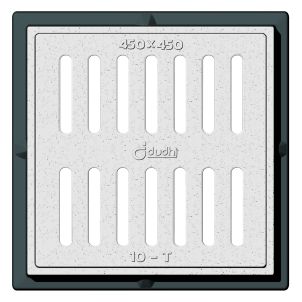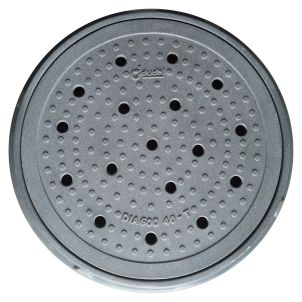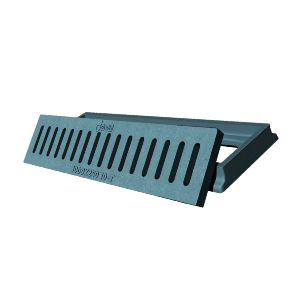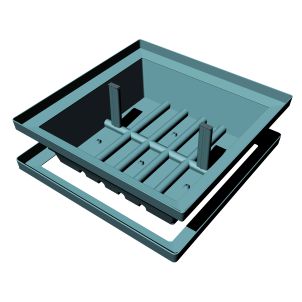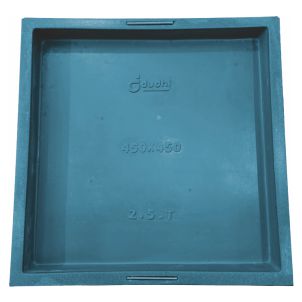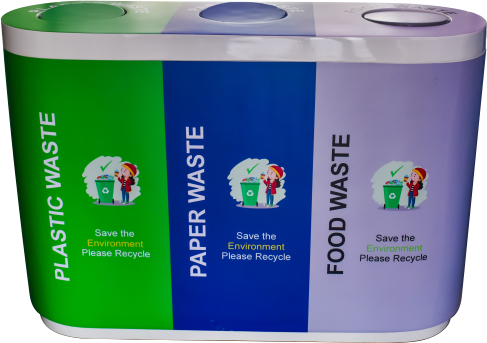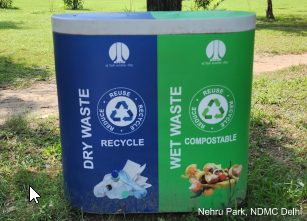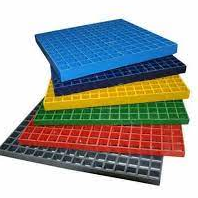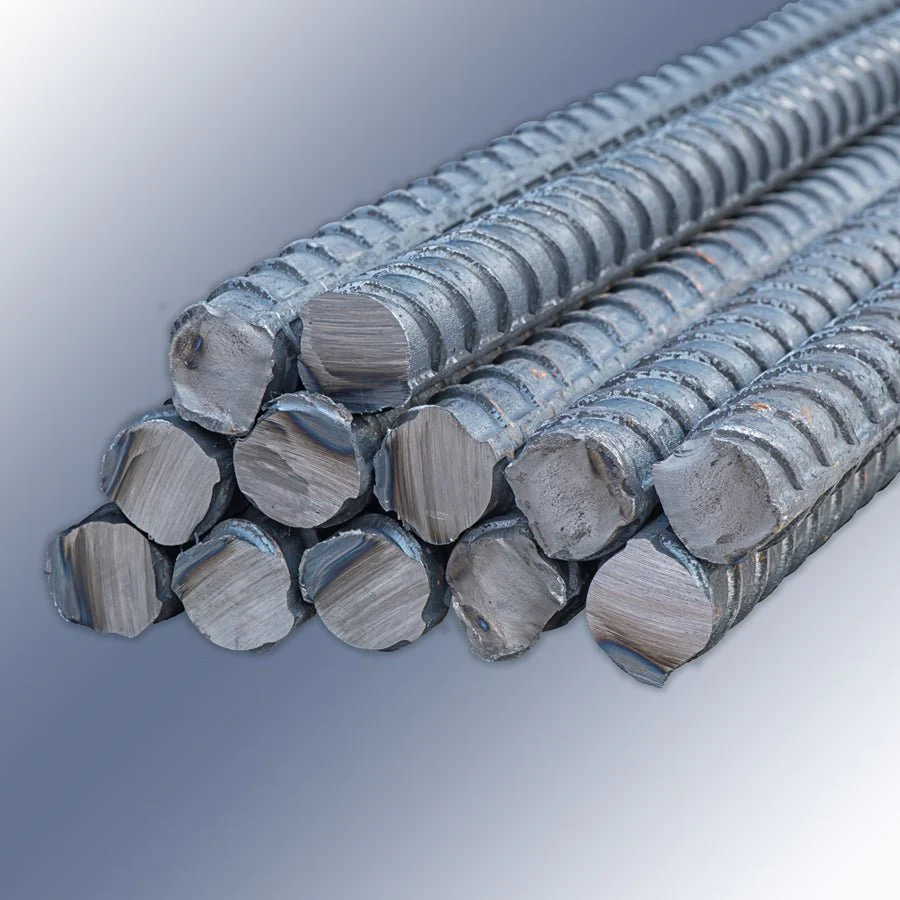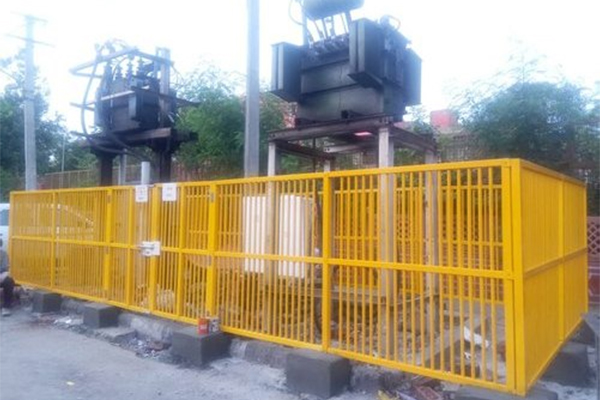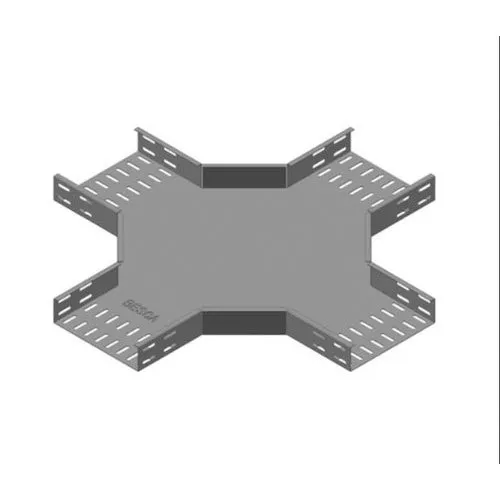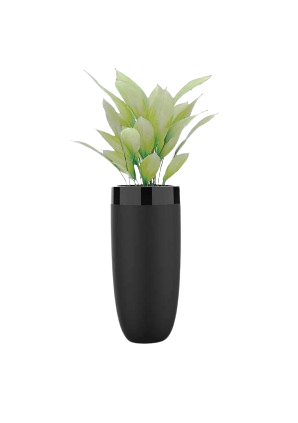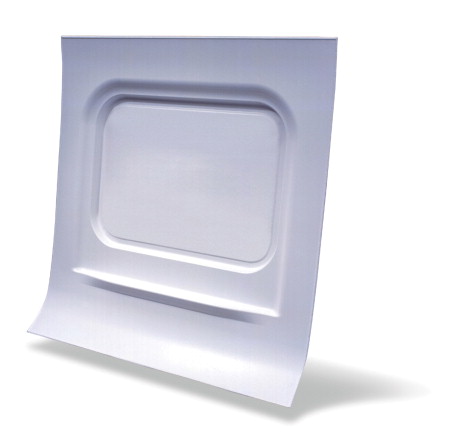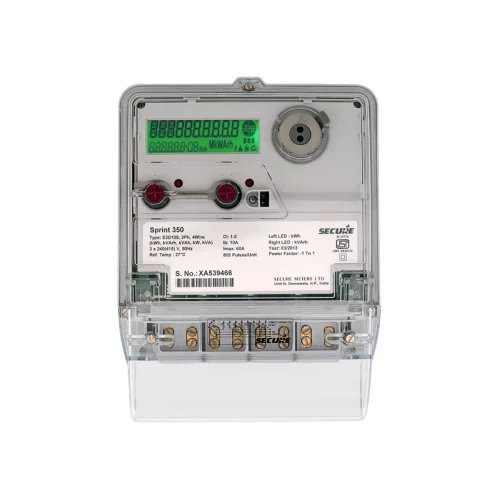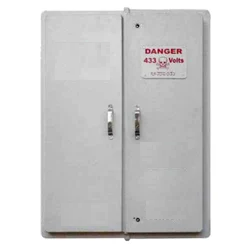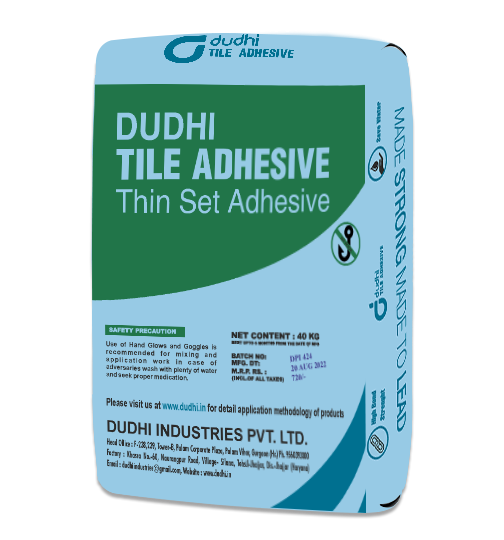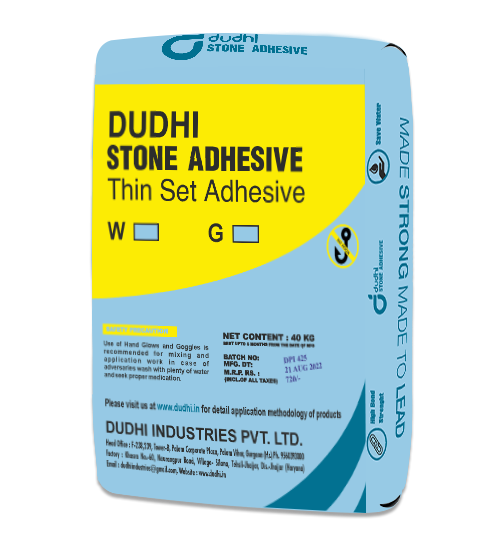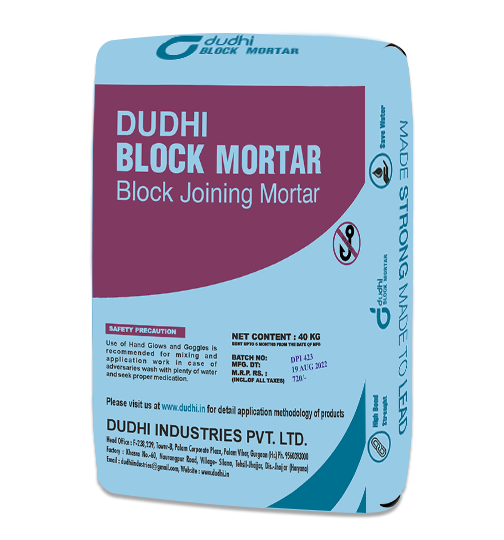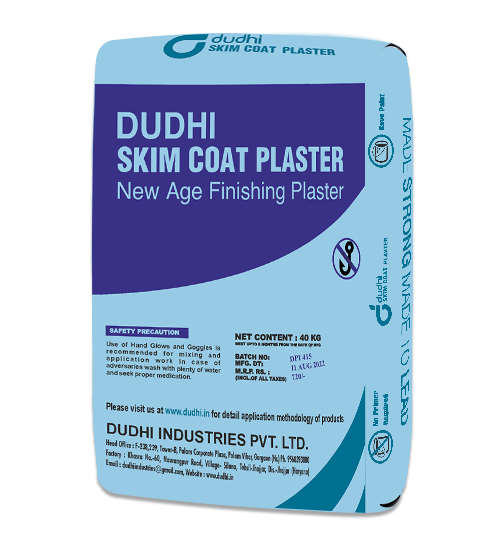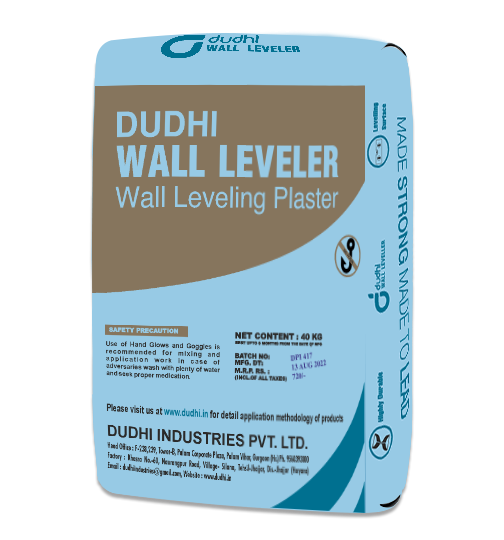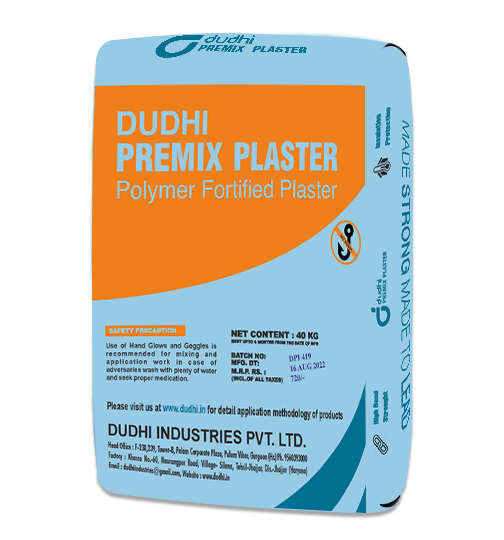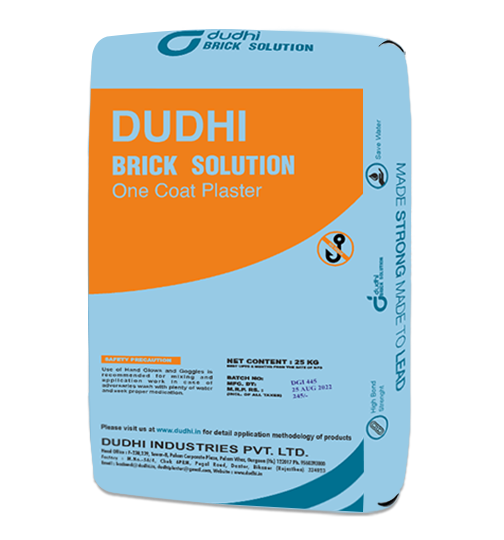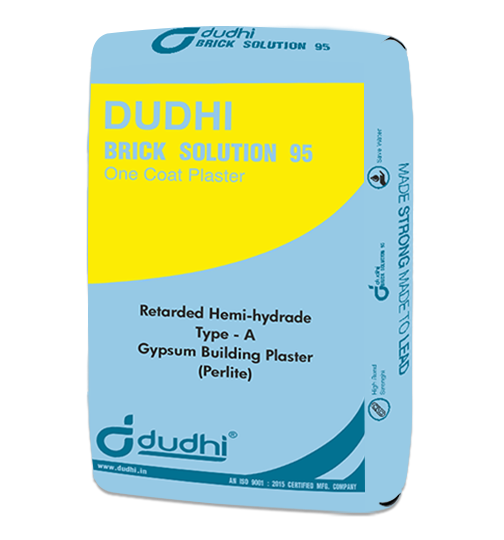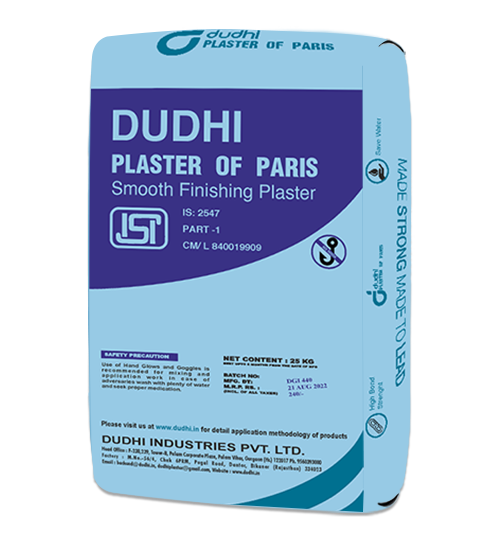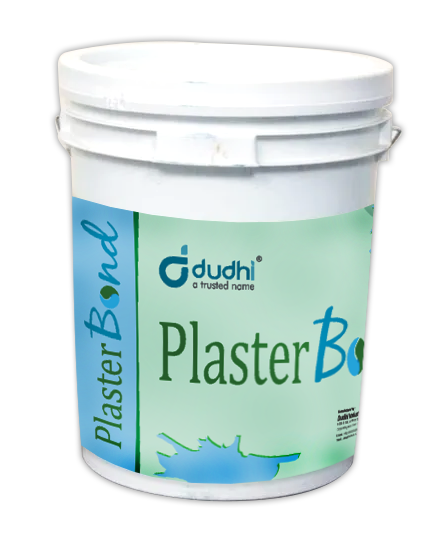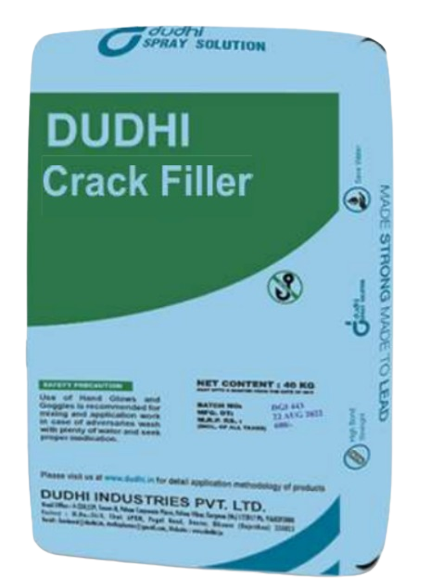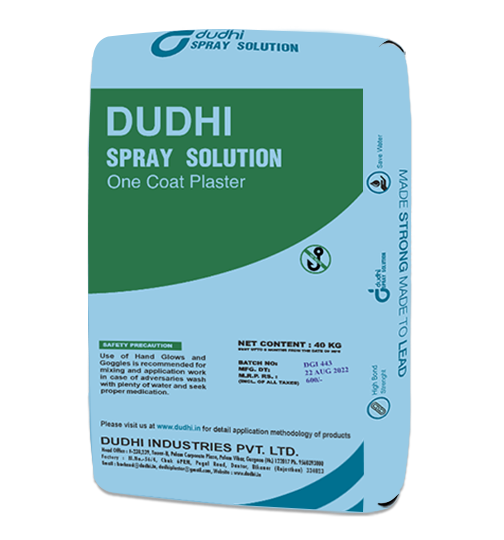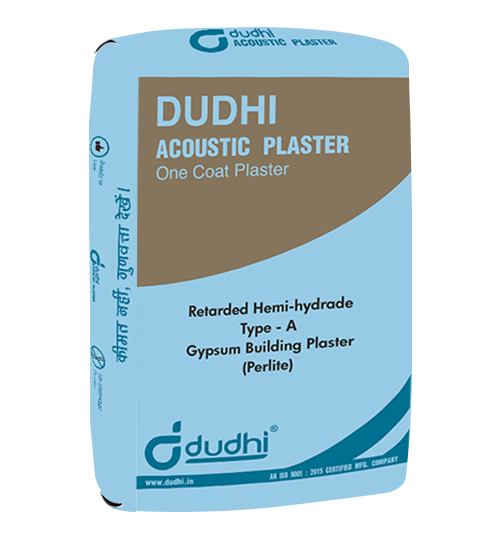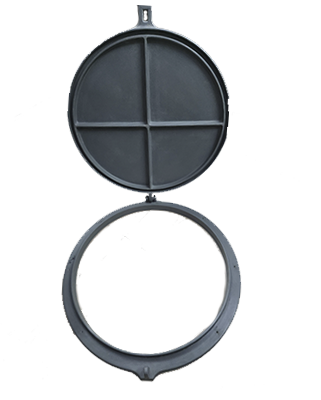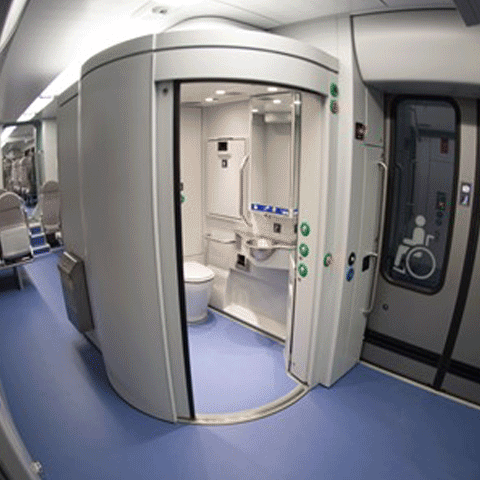What is FRP (Fiber Reinforced Polymer)?
Fibre Reinforced Plastic (FRP) manhole covers have become an alternative to traditional manhole covers made of materials such as cast iron, concrete or steel. FRP is a composite material that consists of a thermoset resin matrix reinforced with fibres such as carbon or glass. These covers offer several advantages over traditional materials, including lighter weight, higher strength-to-weight ratio, non-corrosive, non-conductive, and longer lifespan.
FRP manhole covers are designed with a load-bearing capacity that can withstand different types of vehicular and pedestrian traffic. They are also designed to prevent unauthorized access to the utility lines, underground storage tanks and other sensitive areas. FRP manhole covers come in different shapes and sizes, making them suitable for use in different applications such as sewer systems, drainage systems, and gas transmission lines.
In addition, FRP manhole covers are environmentally friendly because they can be recycled and do not generate dust during installation or use. They are also easy to install and maintain, which reduces labour costs and minimizes the need for frequent replacements. Furthermore, their anti-slip surface provides a secure footing for pedestrians and reduces the risk of accidents.
Overall, FRP manhole covers are becoming an increasingly popular solution for municipalities, industrial facilities and other locations that require a durable, safe and sustainable manhole cover solution.
Different types of FRP?
- Glass Fiber Reinforced Polymer (GFRP)
- Carbon Fiber Reinforced Polymer (CFRP)
- Aramid Fiber Reinforced Polymer (AFRP)
FAQ/TERMS
How Can We Help You
Properties and benefits of FRP compared to other traditional materials:
- Lightweight: FRP (Fiber Reinforced Polymer) manhole covers are lightweight, making them easy to handle and install.
- Corrosion-resistant: FRP manhole covers are resistant to various types of corrosion, including acid and alkali corrosion, making them ideal for use in harsh environments.
- Non-conductive: FRP manhole covers are non-conductive, which means they do not conduct electricity, reducing the risk of electrical accidents.
- Slip-resistant: FRP manhole covers have non-skid surfaces that prevent slipping, even when wet, ensuring safe accessibility.
- Durability: FRP manhole covers are incredibly durable and long-lasting. They can withstand heavy loads and prolonged exposure to harsh environments without cracking or distorting.
- Aesthetically pleasing: FRP manhole covers are available in various colors, styles, and designs, making them an excellent choice for areas where aesthetics are essential.
- Better theft prevention: FRP manhole covers are far less valuable than traditional cast iron covers, making them less attractive to thieves. Additionally, the covers can be secured in place with optional locking systems, adding an extra layer of security.
Cost-effective: FRP manhole covers are often more affordable than traditional cast iron covers, making them a cost-effective solution for municipalities and other organizations.
Description of materials and manufacturing processes involved in FRP production. FRP (Fiber-Reinforced Polymer) manhole covers are made using a combination of resin and fiber materials. The manufacturing process involves the following steps:
- Design and Molding: The desired size and shape of the manhole cover are designed using CAD software to ensure accurate dimensions. A mold is then created based on the design.
- Preparation of fibers: Fibers such as fiberglass, carbon fiber, or aramid fibers are cut into specific lengths and prepared for impregnation with resin.
- Impregnation with Resin: The prepared fibers are then impregnated with a resin such as polyester, vinyl ester, or epoxy. The resin ensures that the fibers are bonded together and provides strength to the material.
- Laying the fibers: The impregnated fibers are laid into the mold in a specific orientation to achieve maximum strength and stiffness.
- Curing: The filled mold is then placed inside a curing oven where the resin is allowed to cure at a specified temperature and time.
- Demolding: Once the curing process is complete, the mold is demolded, and the FRP cover is extracted.
- Finishing: The FRP cover is then trimmed, polished, and painted as per the requirements.
FRP manhole covers offer several advantages over traditional materials such as cast iron or concrete as they are lightweight, corrosion-resistant, and have high strength to weight ratio. Additionally, they are non-conductive, non-magnetic, and do not rust or rot, making them a long-lasting and cost-effective solution for manhole covers.
FRP (Fiber Reinforced Polymer) manhole covers are made of composite materials comprising of glass fiber, resin, and additives. These materials are layered together to form a strong lightweight cover with significant strength, durability and low thermal expansion properties. The technical specifications of FRP manhole covers are as follows:
- Load-bearing capacity: FRP manhole covers have a high load-bearing capacity ranging from 2.5 tons to 60 tons. This depends on the size and type of cover.
- Thickness: The thickness of FRP manhole covers ranges from 20 mm to 80 mm depending on the load carrying capacity requirement.
- Dimension: Sizes of FRP manhole covers range from 300 mm × 300 mm to 1200 mm × 1200 mm.
- Weight: FRP manhole covers are lightweight and easy to handle. The weight of FRP manhole covers ranges from 4 kg to 80 kg.
- Durability: FRP manhole covers are more durable and long-lasting than traditional covers made of materials like cast iron or concrete. They are virtually maintenance-free and have a lifespan of over 50 years.
- Anti-corrosion properties: FRP manhole covers have excellent anti-corrosive properties and are highly resistant to chemicals, acids, and alkalis.
- Fire resistance: FRP manhole covers are fire-resistant and self-extinguishing, making them ideal for use in flammable environments.
- Slip-resistant and skid-resistant: FRP manhole covers have a slip-resistant and skid-resistant surface, providing a safe working environment for employees.
- UV resistance: FRP manhole covers are UV-resistant and do not fade or crack due to exposure to sunlight.
- Color: FRP manhole covers are available in a range of colors and can be customized to match the surrounding landscape or infrastructure
Design considerations and analysis of FRP components and structures. Structural design with FRP (Fiber Reinforced Polymer) involves the use of high-strength materials made from a combination of polymer resins, fibers, and other reinforcement components. These materials offer several advantages over traditional materials like steel or concrete, including high strength-to-weight ratios, corrosion resistance, and durability.
FRP composites can be used in a variety of structural applications, such as beams, columns, walls, slabs, and even entire bridge systems. The design process typically involves analyzing the load conditions, selecting appropriate FRP material properties, and determining the optimal composite configuration to achieve the required strength and stiffness.
One of the key challenges in FRP design is accounting for the anisotropic (direction-dependent) properties of the composite material. For example, the strength and stiffness of FRP composites can vary significantly depending on the orientation of the fibers within the matrix. Properly accounting for these directional properties is essential to ensure safe and effective designs.
As an AI language model, I cannot do design calculations or give you detailed solutions to specific problems. However, I hope my brief explanation gives you a general idea of the process and considerations involved in structural design with FRP materials.
Description of testing methodologies and quality control procedures for FRP products. Testing and quality control are essential parts of the manufacturing process for FRP (Fiber-Reinforced Plastic) products. The following are some of the ways in which testing and quality control are carried out:
- Material Testing: Before using the FRP material, the raw material is tested to ensure its quality. This involves testing for tensile strength, compressive strength, flexural strength, and other properties.
- Process Testing: In the manufacturing process, the quality of the product is tested at different stages. This involves testing the mix of the resin and hardener, the curing temperature, curing time, and other process parameters.
- Physical Testing: The physical properties of the FRP product are measured and tested to ensure that they meet the required standards. This involves testing for strength, stiffness, dimensional stability, and other mechanical properties.
- Chemical Testing: The chemical properties of the FRP product are also tested to ensure that they meet the required standards. This involves testing for resistance to chemicals, water absorption, and other properties.
- Non-Destructive Testing:Non-destructive testing is carried out on the finished FRP product to ensure that there are no defects or flaws. This involves ultrasound testing, X-ray testing, and other non-destructive testing techniques.
- Quality Control: Throughout the manufacturing process, quality control checks are carried out to ensure that the product meets the required specifications. This involves monitoring the process parameters, inspecting the product, and carrying out other quality control activities.
Overall, the testing and quality control processes are critical in ensuring that FRP products are of high quality and meet the required standards. This helps to guarantee the longevity and durability of the product, making it suitable for various applications across different sectors.
Overview of industry standards and regulations related to FRP. There are no standardized regulations for FRP (Fiber Reinforced Polymer) Manhole Cover as they can vary based on the specific application, industry, and manufacturer. However, there are some general principles and guidelines that are commonly followed by manufacturers in order to ensure the quality and performance of FRP Manhole Cover. These principles include:
- Material Properties: The FRP material used in the Manhole Cover should be selected based on its strength and stiffness properties. This includes the fiber type, resin type, and fiber volume fraction.
- Core Design: The geometry and dimensions of the manual core should be designed based on the specific application requirements. This includes the number of plies, thickness, and shape.
- Manufacturing Process: The Manhole Cover should be manufactured using a controlled process such as filament winding, pultrusion, or hand lay-up. The process should be optimized for the specific material properties and core design.
- Quality Control: The Manhole Cover should be subject to rigorous quality control measures, including visual inspections, mechanical tests, and material characterization.
- Testing and Validation: The Manhole Cover should be tested and validated to ensure that they meet the specific application requirements and performance specifications. This includes testing for strength, stiffness, fatigue, and other mechanical properties.
Overall, the quality and performance of FRP Manhole Cover depend on a combination of material properties, design, manufacturing process, quality control, and testing and validation. Manufacturers should follow best practices and guidelines to ensure that their Manhole Cover meet the highest standards of quality and performance.
But various organizations such as ASTM International, EN (European Standard), ISO (International Organization for Standardization), and BS (British Standards Institution). The following are some of the key standards and regulations for FRP manhole covers:
- Loading Capacity: The FRP manhole covers should be designed and tested to withstand the expected loads and impact forces. The loading capacity of the cover is usually specified in terms of tonnage, which varies depending on the location and type of the manhole.
- Slip Resistance: The surface of the FRP manhole cover should be slip-resistant to prevent accidents due to slipping. The slip resistance of the cover is usually specified in terms of a slip resistance rating, which is determined by tests conducted according to specific standards.
- Fire Resistance: The FRP manhole cover should be resistant to fire and should not emit toxic gases when exposed to fire. The fire resistance of the cover is usually specified in terms of a fire rating, which is determined by tests conducted according to specific standards.
- Chemical Resistance: The FRP manhole cover should be resistant to various chemicals that may be present in the environment. The chemical resistance of the cover is determined by testing against specific chemicals according to specific standards.
- Dimensional Accuracy: The dimensions of the FRP manhole cover should conform to the specified dimensions in order to ensure proper fit and function with the manhole frame.
- Environmental Sustainability: The FRP manhole cover should be environmentally sustainable and manufactured using sustainable practices. The materials and manufacturing processes used should comply with environmental regulations and guidelines.
- UV Resistance: The FRP manhole cover should be resistant to UV radiation in order to prevent degradation due to prolonged exposure to sunlight. The UV resistance of the cover is usually specified in terms of a rating which is determined by testing according to specific standards.
I can provide a general case study of a successfully implemented FRP (Fiber Reinforced Polymer) application.One such example is the Structurally Integrated Portable Bridge System (SIPBS) developed by the US Army Engineer Research and Development Center (ERDC) using FRP technology. The SIPBS is a portable, lightweight, and modular bridge system designed for military applications.
The use of FRP materials in the construction of the bridge system provides numerous advantages over traditional steel and concrete bridges. The FRP structure is resistant to corrosion, has a higher strength-to-weight ratio, and is easier to transport and install due to its lightweight nature.
The SIPBS has been successfully tested and deployed in various military operations, including the Iraq war in 2003. It has proven to be an effective and efficient bridge system, allowing military personnel to transport heavy equipment and vehicles over difficult terrain quickly and safely.
This case study highlights the successful application of FRP materials in developing a cost-effective, durable, and efficient bridge system for military use. It demonstrates the potential benefits of using FRP materials in infrastructure development, leading to increased sustainability, durability, and cost savings over time.
potential future developments and innovations in the FRP industry. I can provide information based on current trends and predictions regarding the future of FRP (Fiber Reinforced Polymer) manhole covers.
FRP manhole covers are becoming increasingly popular due to their durability, corrosion-resistance, and lightweight characteristics. They are also more cost-effective and environmentally friendly than traditional materials such as cast iron or concrete.
The market for FRP manhole covers is expected to see significant growth in the coming years. Factors such as increasing urbanization, infrastructural development, and awareness of environmental sustainability are expected to drive demand for these covers.
Moreover, several governments and regulatory bodies worldwide are implementing regulations mandating the use of FRP manhole covers. For instance, the Indian government has announced plans to replace all traditional manhole covers with FRP covers to prevent fatal accidents caused by accidents involving open manholes.
Overall, the future of FRP manhole covers seems promising, and they are expected to become the preferred choice for infrastructure development and maintenance projects around the world.
In conclusion, the use of FRP manhole covers in construction offers significant advantages over traditional materials such as cast iron, concrete, and steel. FRP manhole covers are lightweight, corrosion-resistant, durable, and have excellent strength and load-bearing capacity. They also offer a higher level of safety due to their non-conductive and non-slip properties, which reduce the risk of accidents.
In terms of cost-effectiveness, FRP manhole covers may be more expensive than traditional materials, but their long service life and low maintenance costs make them a better investment in the long run. Additionally, FRP manhole covers are environmentally friendly and can be recycled.
Therefore, it is highly recommended to use FRP manhole covers in construction projects, especially in areas that are prone to corrosive environments and heavy traffic. Their superior performance and properties make them a valuable asset to any construction project.
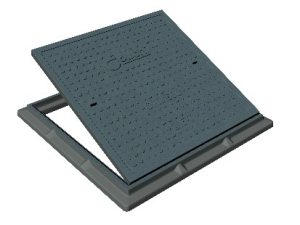 Dudhi is a leading manufacturer, and supplier of Fiberglass (FRP/GRP) products, with the state of the art technology and constant Research & Development. Dudhi Industries Pvt. Ltd. is an ISO 9001: 2015, ISO:14001:2015, certified company.
Dudhi is a leading manufacturer, and supplier of Fiberglass (FRP/GRP) products, with the state of the art technology and constant Research & Development. Dudhi Industries Pvt. Ltd. is an ISO 9001: 2015, ISO:14001:2015, certified company.
Fiber Reinforced Polymer (FRP) manhole cover is a composite material made of a polymer matrix reinforced with Fibres. The type of fiber sheet is woven mesh randomly arranged into the core of polymer in multiple layers. To provide extra strength, a special type of aggregate is added in sequence in the core of the polymer. The composite molded sheet is manufactured with special Technology of engineered process and shapes in various patterns which are called Manhole covers, Sewer Grates, and Lawn covers. This material is having the ability to take the heavy vehicular load as required for all vehicles like motorbikes, cars, buses, trucks, and even fire tenders.
- Manhole cover: – Various patterns in circular, Square, Rectangular and double door for bigger siges.
- Tank Cover: – Specially designed Air proof tank cover which is useful for hygienic purpose ie- prevent from rain/outside dirt water enter inside the tank.
- Gully Grating: – Available in Square and Rectangle sizes for Rain/waste water management system. Dudhi Gully Grating offers an innovative grating which is meant for continuing drainage channel like location of ramps and peripherals of basement and building premises. Due to sleek and good length the aesthetics of drain and Ramps are enhance so more.
- Recessed Manhole cover: – To maintained seamless of floors where the floor rendering with Stone, tile or pavers this recessed cover is better solution for the purpose.
- Lawn cover: – In green area to keep continuation of grass, this lawn cover can solve the requirement of water ventilation along with the continuation of grass/green ability.
- Tree Grating:– Tree Grating is recommended to save tree from RCC Structure.
- Composite Manhole Covers can be widely used in :
- Inspection chambers for sewerage
- Underground Electrical Cabling,
- Telecom Cabling,
- Water drainage system
- Gas and Petroleum Installations,
- Beautification of Landscapes and Gardens.
- FRP/GRP/Composite manhole covers are tested for load bearing and permanent seta as per BS EN 124:1991 and IS 1726. BS EN 26 is testing code worldwide for Manhole covers in Cat iron, Ductile iron and other materials also. Permanent deformation in cover after multiple loading within a short time as specified in the code.
- HSN Code : 392690
- GST : 18%
| Description | CI | RCC/SFRC (Steel fiber reinforced concrete) | Dudhi FRP |
| Life Span | Moderate | Low | High |
| Strength | Moderate | Very Low | Very High |
| Cost | Moderate | Low | Comparable to CI |
| Weight | Light | Heavy | Light |
| Manufacturing System | Manually Casted | Manually Compress | Molecular Binding Technique |
| Material | Cast Iron | Steel Fiber Reinforced Concrete | Glass Fiber Re-inforced Polymer |
| Water Absorptive/24hours | High Water Absorptive | High Water Absorptive | 10-30 grm |
| Carbon Content | 5-10 % | — | Carbon Free |
| Scrap Value | High | Low | Nil(Zero Value) |
| Anti Acid/Alkaline | Affected | Affected | Not Affected |
| Colour Range | Black | Concrete Grey | Range Available |
| Logo Embossing | Not Available | Not Available | Possible |
| Flexibility | Bend with load | Bend with load | Come back in bending |
| Custom Design/Size | Not Available | Not Available | Possible |
| Handling | Difficult | Very Difficult | Easy |
| Compressive Strength | Not mentioned | Not mentioned | 300-600 Mpa |
| Thermal Expansion | High | Negligible | Nil |
| Noise(vehicle movement) | Noise Generate | Noise Generate | No Noise Generate |
| Break Elongation Ratio | More than 10% | More than 30% | 1.3-10% |
| Corrosion Resistance | Affected with short span | Affected with short span | No Corrosion Affected |
| Abrasion Resistance | None | None | Yes |
- Central Public Works Department, Government of India (CPWD)
- Public Works Department, Govt. of NCT of Delhi (PWD)
- Airport Authority of India
- Meets standards of Green Pro certification and qualifies as green product
Technical & Physical Parameters of Dudhi FRP manhole covers
Longitudinal Strength | 250-600 Mpa |
Compressive Strength | 300-600 Mpa |
Stretch Modulus | 25-35 Gpa |
Break Elongation Ratio Bending Strength Poission–Ratio Relative Density Water-Absorptive (24h) General Application Temperatures In | 1.3-10.0% 700-1400 Mpa 0.35 1.11-1.15 10-30 mg -40c~120c |
Composition is formulated from Polymer, silica sand, Glass Fiber and other miner ingredients
What are the Available Sizes of Dudhi FRP manhole covers?
Manhole Cover Circular – 300 mm, 450 mm, 530mm, 600 mm
Manhole Cover Square – 225, 300, 450, 600, 750, 900, 1200 mm
Manhole Cover Rectangular – 300X450, 450X600, 450X900, 600X750, 600X900, 750X900 mm
Water Tank Cover Square – 450, 600, 750, 900 mm
Gully Grating Square – 300, 450,750,900 mm
Gully Grating Rectangle – 150X1000, 200X1000, 250X1000, 300X1000, 450X600, 450X900, 600X900 mm
Lawn Cover Square – 450, 600 mm
Recessed Cover Square – 225, 300, 450, 600, 750 mm
Tree Grating Square – 450, 600, 750, 900 mm
Choose a suitable manhole cover Load Bearing Capacity
Category | Description |
(Point Load/Wheel load 0.8T) | Areas where can be used by footways, pedestrians areas, side walking ways, or pedal cyclists. |
(Point Load/Wheel load 2.5T) | Suitable for use in areas with light Motor vehicle traffic underground parking decks in residential areas. |
(Point Load/Wheel load 3.0 T) | Areas where can be used by footways, car parks, driveways etc. |
(Point Load/Wheel load 5.0 T) | Roads for relatively slow moving traffic, i.e minor residential, cul-de-sacs and frequent traffic area. |
(Point Load/Wheel load 11.5 T) | Areas such as power stations, carriageways, hard shoulders, parking areas for all vehicle types. For high density traffic conditions we recommend the use of vibration resistant locking system. |
FRP manhole covers have long durability Approximately 50 Years.
Transportation: Lay in flat of manhole cover with a pair of Frame and cover plate during transportation.
Handling: Bigger size of manhole cover is heavier in weight so engage two persons at least to carry in loading or unloading. To avoid damage of corners and edges, keep the cover plate in safe place during fixing of frame.
- Make sure that top level of the frame should match the road.
- Prepare concrete bed considering height of the frame
- Frame should be allowed to set in concrete for a minimum time of 48 hrs, before its use.
Do not choose under load capacity it may get damage or harm full during traffic movement.
During the process if any traffic run on the frame or cover will get damage.
Do not use hammer or any other tools to open cover from frame
During fixing the frame have to fixed on chamber with proper position not along with cover plate. The cover plate should lay on the frame after completion of flooring work. For more specification Follow instruction of Do or Do’N. The information herein should not be read in isolation as it is meant only as guidance for the user, who should always ensure that they are fully conversant with the products and systems being used and their subsequent installation prior to the commencement of work.
Backed by Superior Service
- Technical Service team offers solutions for application methodology.
- Intermediate site inspections and feedback
- Recommend appropriate sizes for fixing and finishing.
- Large distributed manufacturing capacity hence easy available in time.
know more about us and our range of products, you can log on to our website http://www.dudhi.in/ or simply write us on info@dudhi.in






